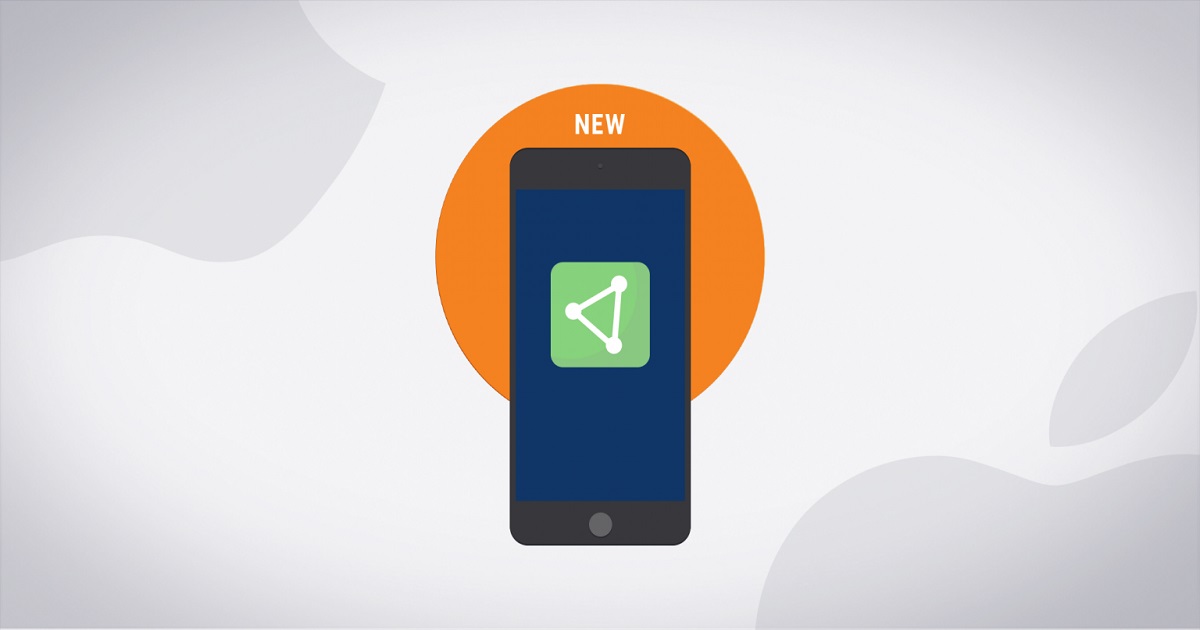
VMware, Vsphere, Hyper-V
Article | May 2, 2023
Your ProtonVPN iOS app is now better equipped to fight censorship and offers more flexible connection options with the launch of OpenVPN for iOS. The OpenVPN protocol is one of the best VPN protocols because of its flexibility, security, and because it is more resistant to blocks. You now have the option to switch between the faster IKEv2 protocol and the more stable and censorship-resistant OpenVPN protocol.
Read More

Virtual Desktop Strategies, Server Hypervisors
Article | April 27, 2023
Researchers have published the details of an investigation into CVE-2020-3952, a major vulnerability in VMware's vCenter that was disclosed and patched on April 9. The flaw was given a CVSS score of 10. CVE-2020-3952 exists in VMware's Directory Service (vmdir), which is a part of VMware vCenter Server, a centralized management platform for virtualized hosts and virtual machines. Through vCenter Server, the company says, an administrator can manage hundreds of workloads. The platform uses single sign-on (SSO), which includes vmdir, Security Token Service, an administration server, and the vCenter Lookup Service. Vmdir is also used for certificate management for the workloads vCenter handles.
Read More

Server Hypervisors
Article | May 18, 2023
Learn setting up a Docker and Kubernetes environment with the right considerations and choose the best-suited software from ten leading tools, softwares and platforms for your business needs.
Contents
The blog discusses how Kubernetes and Docker can boost software development and deployment productivity. In addition, it covers the benefits of the role of Kubernetes in orchestrating containerized applications and best practices for implementing these technologies to improve efficiency and streamline workflows. Docker and Kubernetes are both essential containerization ecosystem utilities. Kubernetes, an excellent DevOps solution, manages and automates containers' deployment and scaling, along with operating across clusters of hosts, whereas Docker is used for creating and operating containers. The blog covers tips to consider while choosing tools/platforms. It further enlists ten platforms providing Kubernetes and Docker, featuring their offerings.
1. Considerations While Setting Up a Development Environment with Kubernetes and Docker
1.1 Fluid app delivery
A platform for application development must provide development teams with high velocity. Two factors contribute to high velocity: rapid application delivery and brief development cycles. Application platforms must support build processes that start with source code. The platforms must also facilitate the repetitive deployment of applications on any remote staging instance.
1.2 Polyglot support
Consistency is the defining characteristic of an application platform. On-demand, repetitive, and reproducible builds must be supported by the platform. Extending a consistent experience across all languages and frameworks elevates the platform experience. The platform must support a native build process and the ability to develop and customize this build process.
1.3 Baked-in security
Containerized environments are secured in a significantly different manner than conventional applications. A fundamental best practice is to utilize binaries compiled with all necessary dependencies. The build procedure should also include a directive to eliminate unnecessary components for the application's operation. Setting up a zero-trust architecture between platform components that orchestrate deployments significantly improves the workloads' security posture.
1.4 Adjustable abstractions
A platform with paved paths and the flexibility to accommodate the requirements of software engineering teams has a greater chance of success. Open-source platforms score highly in this regard, particularly those with modular architectures that allow the team to swap out parts as they adjust.
2.Top Tips to Consider While Choosing Tools and Platforms for Kubernetes and Docker
2.1 Production-Readiness
Configuring Kubernetes or Docker can be complex and resource-intensive. A production-ready platform will ensure having the necessary fully automated features without the need for configuration. Security is an essential aspect of production readiness. Additionally, automation is critical, as production readiness requires that the solution manage all cluster management duties. Automated backup, recovery, and restore capabilities must be considered. Also, ensure the high availability, scalability, and self-healing of the cluster's platform.
2.2 Future-Readiness
As the cloud and software evolve, a system's hosting location may affect its efficacy. The current trend is a multi-cloud strategy. Ensure that the platform can support abstracting from cloud or data center providers and building a shared infrastructure across clouds, cloud regions, and data centers, as well as assist in configuring them if required. According to a recent study, nearly one-third of organizations are already collaborating with four or more cloud service providers. (Source: Microsoft and 451 Research)
2.3 Ease of Administration
Managing a Docker or Kubernetes cluster is complex and requires various skill sets. Kubernetes generates a lot of unprocessed data, which must be interpreted to comprehend what's happening with the cluster. Early detection and intervention are crucial to disaster prevention. Identifying a platform that eliminates the issue of analyzing raw data is essential. By incorporating automated intelligent monitoring and alerts, such solutions can provide critical status, error, event, and warning data to take appropriate action.
2.4 Assistance and Training
As the organization begins to acquire Kubernetesor Docker skills, it is essential to have a vendor that can provide 24/7 support and training to ensure a seamless transition. Incorrect implementation will add a layer of complexity to infrastructure management. Leverage automation tools that offer the support needed to use Kubernetes and Docker without the management burden.
3. 10 Tools and Platforms Providing Kubernetes and Docker
3.1 Aqua Cloud Native Security Platform:
Aqua Security provides the Aqua Cloud Native Security Platform, a comprehensive security solution designed to protect cloud-native applications and microservices. Aqua offers end-to-end security for applications operating on Docker Enterprise Edition (Community Edition), protecting the DevOps pipeline and production workloads with complete visibility and control. It provides end-to-end security across the entire application lifecycle, from development to production, for both containerized and serverless workloads. In addition, it automates prevention, detection, and response across the whole application lifecycle to secure the build, cloud infrastructure, and operating workloads, regardless of where they are deployed.
3.2 Weave Gitops Enterprise
Weave GitOps Enterprise, a full-stack, developer-centric operating model for Kubernetes, creates and contributes to several open-source projects. Its products and services enable teams to design, build, and operate their Kubernetes platform at scale. Built by the creators of Flux and Flagger, Weave GitOps allows users to deploy and manage Kubernetes clusters and applications in the public or private cloud or their own data center. Weave GitOps Enterprise helps simplify Kubernetes with fully automated continuous delivery pipelines that roll out changes from development to staging and production. Weaveworks has used Kubernetes in production for over eight years and has developed that expertise into Weave GitOps Enterprise.
3.3 Mirantis Kubernetes Engine
Mirantis provides the Mirantis Kubernetes Engine, a platform designed to help organizations deploy, manage, and scale their Kubernetes clusters. It includes features such as container orchestration, automated deployment, monitoring, and high availability, all designed to help organizations build and run their applications at scale. Mirantis Kubernetes Engine also includes a set of tools for managing the lifecycle of Kubernetes clusters, including cluster deployment, upgrades, and patching. It also has security scanning and policy enforcement features, as well as integration with other enterprise IT systems such as Active Directory and LDAP.
3.4 Portworx by Pure Storage
Portworx's deep integration into Docker gives Portworx container data services benefits directly through the Docker Swarm scheduler. Swarm service creation brings the management capability of Portworx to the Docker persistent storage layer to avoid complex tasks such as increasing the storage pool without container downtime and problems like stuck EBS drives. Portworx is also a multi-cloud-ready Kubernetes storage and administration platform designed to simplify and streamline data management in Kubernetes. The platform abstracts the complexity of data storage in Kubernetes. Additionally, it serves as a software-defined layer that aggregates Kubernetes nodes' data storage into a virtual reservoir.
3.5 Platform9
Platform9 provides a powerful IDE for developers for simplified in-context views of pods, logs, events, and more. Both development and operations teams can access the information they need in an instant, secured through SSO and Kubernetes RBAC. The industry’s first SaaS-managed approach combined with a best-in-class support and customer success organization with a 99.9% consistent CSAT rating delivers production-ready K8s to organizations of any size. It provides services to deploy a cluster instantly, achieve GitOps faster, and take care of every aspect of cluster management, including remote monitoring, self-healing, automatic troubleshooting, and proactive issue resolution, around the clock.
3.6 Kubernetes Network Security
Sysdig provides Kubernetes Network Security, a solution that offers cloud security from source to run. The product provides network security for Kubernetes environments by monitoring and blocking suspicious traffic in real time. It helps organizations protect their Kubernetes clusters against advanced threats and attacks. The product and Sysdig Secure offer Kubernetes Network Monitoring to investigate suspicious traffic and connection attempts, Kubernetes-Native Microsegmentation to enable microsegmentation without breaking the application, and Automated Network Policies to save time by automating Kubernetes network policies.
3.7 Kubernetes Operations Platform for Edge
Rafay delivers a production-ready Kubernetes Operations Platform for Edge, streamlining ongoing operations for edge applications. It provides centralized multi-cluster management to deploy, manage, and upgrade all Kubernetes clusters from a single console across all edge nodes. In addition, it offers comprehensive lifecycle management, with which users can quickly and easily provision Kubernetes clusters at the edge, where cluster updates and upgrades are seamless with no downtime. Furthermore, the KMC for Edge quickly integrates with enterprise-class SSO solutions such as Okta, Ping One, and Azure AD, among others. Other features include standardized clusters and workflows, integration and automation, and centralized logging and monitoring.
3.8 Opcito Technologies
Opcito provides simplified container management with efficient provisioning, deployment, scaling, and networking. Its application containerization expertise helps containerize existing and new applications and dependencies. Opcito is well-versed in leading container orchestration platforms like Docker Swarm and Kubernetes. While it helps choose the container platform that best suits specific application needs, it also helps with the end-to-end management of containers so clients can release applications faster and focus on innovation and business. The container management and orchestration services include: building secured microservices, Enterprise-scale Container Management and Orchestration, Orchestration, and Container Monitoring.
3.9 D2iQ Kubernetes Platform (DKP)
D2iQ (DKP) enables enterprises to take advantage of all the benefits of cloud-native Kubernetes while laying the groundwork for intelligent cloud-native innovation by simplifying Kubernetes deployment and maintenance. It simplifies and automates the most difficult parts of an enterprise Kubernetes deployment across all infrastructures. DKP helps enterprises easily overcome operational barriers and set them up in minutes and hours rather than weeks and months. In addition, DKP simplifies Kubernetes management through automation using GitOps workflow, observability, application catalog, real-time cost management, and more.
3.10 Spektra
Spektra, by Diamanti, a multi-cluster management solution for DevOps and production teams, provides centralized multi-cluster management, a single control plane to deliver everything needed to provision and manage the lifecycle of multiple clusters. Spektra is built to cater to business needs, from air-gapped on-prem deployments to hybrid and multi-cloud infrastructures. It also enables stretching resources across different clusters within the tenant. Furthermore, it allows you to move workloads and their associated data from one cluster to another directly from its dashboard. Spektra integrates with lightweight directory access protocols (LDAP) and Active Directory (AD) to enable user authentication and streamline resource access. In addition, it offers application migration, data mobility, and reporting.
4. Conclusion
It is evident that Kubernetes and Docker can significantly boost software development and deployment productivity. By adopting appropriate containerization platforms and leveraging Kubernetes for orchestration, organizations can streamline workflows, improve efficiency, and enhance the reliability of their applications. Furthermore, following the tips to choose the tools or platform carefully can further improve productivity.
Read More

Article | August 9, 2021
Businesses use a lot of technology to keep themselves competitive and Businesses use a lot of technology to keep themselves competitive and operationally efficient. One way that organizations use to make their technology infrastructure more accessible is through the use of virtualization. Let’s discuss what virtualization is, how it benefits businesses, and some examples of how you might consider leveraging virtualization to your company’s benefit.
Virtualization for Hardware and Software
Virtualization in its most basic sense is taking something and making it virtual. In regards to hardware and software, it involves taking these parts of your technology infrastructure and making them available in a virtual environment. Virtual applications and hardware solutions can be deployed to the cloud so that they can be accessed by any online device. Some examples of virtualization might include creating virtual machines, like workstations and server units, that are hosted in a virtual environment for as-needed access
Read More